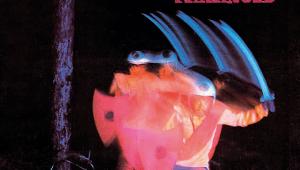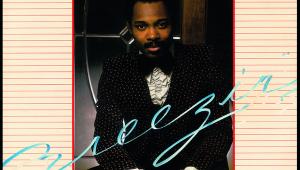Kraftwerk: Autobahn Page 2
Good Vibrations
Later on, Kraftwerk – whose singing could only really be described as adequate – admitted to a love of pop music, including The Beach Boys. On the title track it sounds as if they are singing, 'Fun, fun, fun on the Autobahn', like a sort of German update of The Beach Boys' early car songs. But the lyrics are actually 'Fahren, fahren, fahren auf der Autobahn' – which in English means 'Drive, drive, drive...' – although the group certainly seemed to be having fun in the process.
![]()
Mood Music
The all-instrumental side two of Autobahn is quite different in feel and finds Kraftwerk nodding back towards the more abstract ideas that featured on their early records. On 'Kometenmelodie 1', an eerie electronic piece with high whistling synth over ominous basslines and percussive footfalls, the mood is lightened by some pretty keyboard arpeggios. 'Kometenmelodie 2,' which was released as a single but flopped, has more of a kinship with the title track through its big primary-coloured melodies. The mood darkens with the slow themes and echoed sounds of 'Mittennacht' ('Midnight'), before the delightful 'Morgenspaziergang' ('Morning Walk') brings the album to a close with synthesised running water and bird sounds, koto-like twangs, and a fittingly chirpy school music-room recorder.
Eric Schult painted the sunny road scene for the front of the album's German debut, which also featured photos of the group before their image make-over. But although this artwork was used for a number of releases, it was later superseded by the blue-and-white Bundesautobahn sign [see Discography, right], which has more of a pop art feel as well as being a beautiful design, and which became inextricably linked with the album.
Artificial Intelligence
These days it's clear that behind Kraftwerk's inscrutable and rather remote image lay a wry sense of humour, and they were readily inviting the listener into their conceptual world. But back in the 1970s many simply didn't appear to get it. There was a prevailing distrust of technology, a fear of a dystopian future in which computers would take over the world. Both hippies and fundamentalist rockers prized authenticity born from a mix of inspiration and honest toil, and with their arch stance – they referred to themselves as 'musical workers' rather than musicians, producing 'Industrielle Volksmusik' – Kraftwerk seemed to portend a soulless, if not dystopian, mechanical future.
Melody Maker reviewer Keith Ging embodied this viewpoint with his review of Autobahn: 'Spineless, emotionless with no variety, less taste. For God's sake keep the robots out of music'.
Leading The Way
But those robots weren't going away and, in fact, were going to be massively influential. The clean rhythms of Autobahn influenced David Bowie (particularly the albums Station To Station and Low), post-industrial electronic groups, and the synth pop of the 1980s – one now can't imagine The Human League's Dare having been made without it.
![]()
Autobahn and subsequent Kraftwerk albums also had a huge influence on both hip-hop and Detroit techno in the '80s and '90s, and through to more modern acts such as the French electronic duo Daft Punk. Also, because the group used technology in such a singular way, Autobahn still sounds strangely timeless nearly half a century after its release.
Another of the early criticisms of Autobahn is that its spacious, immersive production, and the synthesised sound of traffic passing from loudspeaker to loudspeaker, prompted people who weren't 'real' music fans but could afford the gear, to buy it for novelty value because 'it sounds good on my stereo'. It undoubtedly did (it still does) – and as readers of this publication will doubtless concur, that is surely no bad thing.










































